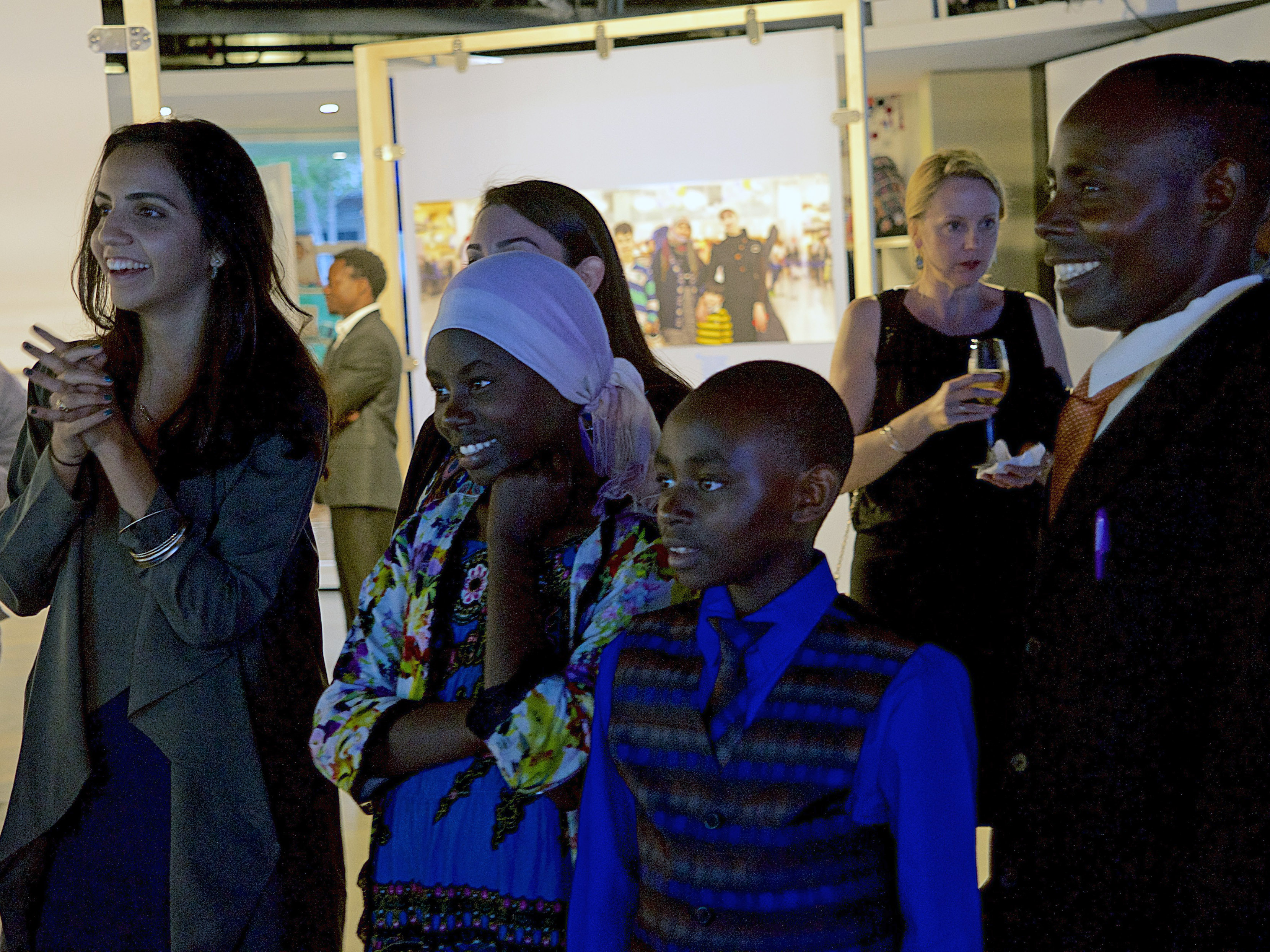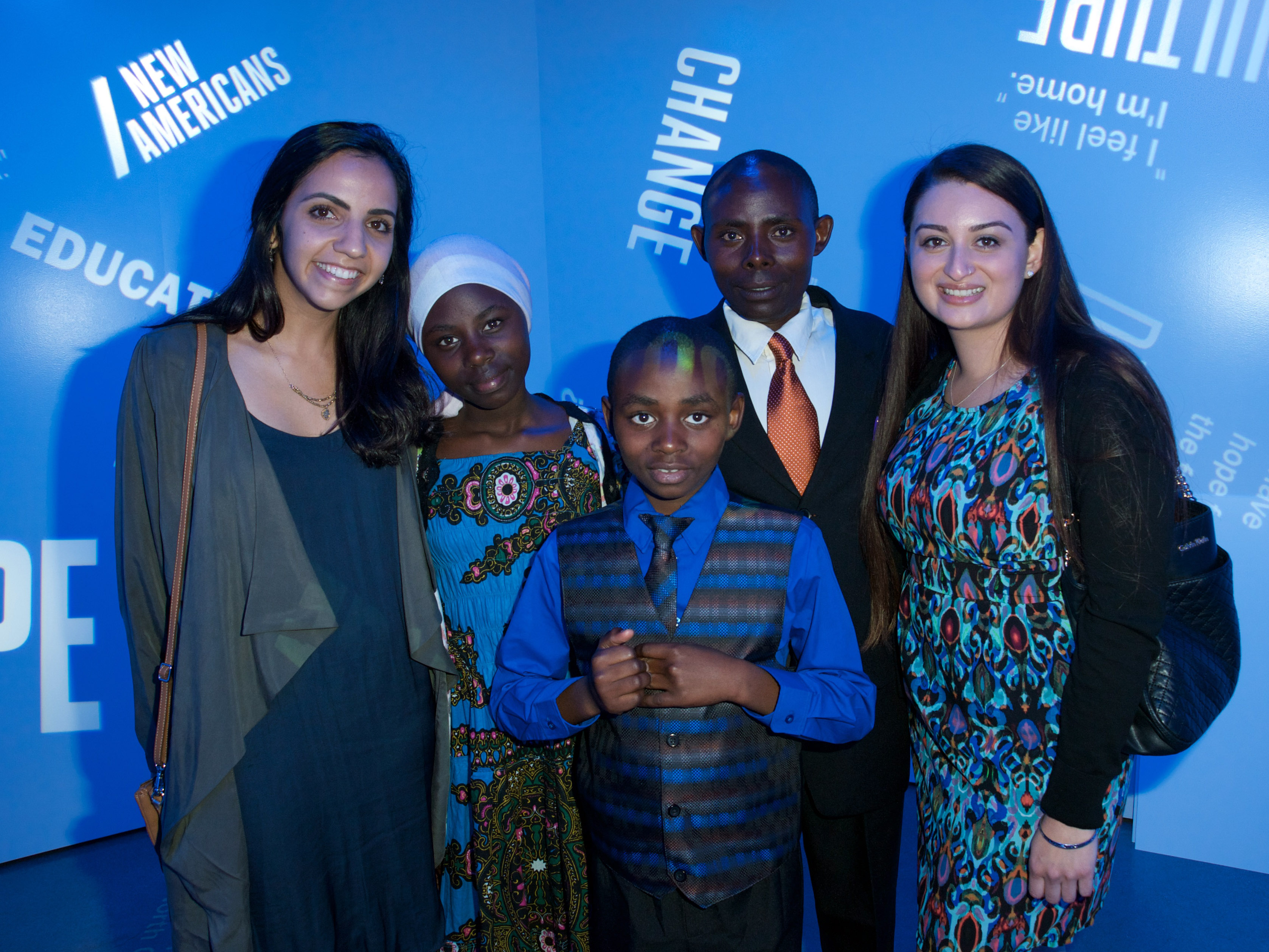A Joyful Life Becomes a Work of Art
By Rachel Nusbaum, HIAS.org
Jul 12, 2016
Sebazira Amatutule spent more than 17 years in a refugee camp in Uganda after he was forced to flee his home in the Democratic Republic of Congo. His two children, Florentine (now 13 years old) and Tito (10), had never known life outside of the camps. Then, something amazing happened.
In June 2015, Amatutule and his children were resettled to the United States. This is incredibly rare—less than 1% of refugees worldwide will be resettled to a third country. But Amatutule seized his chance, and he has been making his way with irrepressible optimism and joy ever since.
With HIAS’ help, the family arrived in Southern California, and our local resettlement partners, Jewish Family Service of San Diego, helped them begin a new chapter there.
Amatutule “has really impacted everyone in our office,” said Jenny Daniel, an Employment Coordinator with JFS-San Diego. “Everyone knows who he is, even if they haven’t worked with him directly. He’s just so joyful and positive.”
Even more than the perpetual smile on his face, Amatutule is known for his eagerness to help others. His phone number is widely circulated among refugees being resettled to the U.S. from Uganda, and despite his busy schedule, working full time as a landscaper and raising two kids on his own, he always makes time to help anyone who asks for assistance.
Amatutule is also “an incredibly involved parent,” Daniel says, “making time after an eight-hour laborious work day to meet with teachers weekly to discuss his children’s studies.” His daughter, now in 7th grade, was already on the honor roll at school before she had been in the U.S. for a full year. She earned straight A’s her second semester, an achievement Daniel noted with pride.
Amatutule’s inspiring story is featured as part of a multimedia presentation on New Californians within REFUGEE, a photography exhibition at the Annenberg Space for Photography in Los Angeles.
“Life in a refugee camp was not easy. Everything was a struggle,” Amatutule says, in a video. Now that his family is resettled, though, “there is security. I can plan for my future. My children can go to school,” he says. We watch him cook with his daughter as his son assembles a science project out of circuits in the next room. We see them walking on the beach, reveling in their American freedoms. In the camps, Amatutule says, you needed a permit in order to go anywhere.
Daniel thinks the photos and videos capture something essential and important about the refugee experience, in a way anyone can understand.
“I’ve been telling my friends and family to go see it. It makes very clear what it means to be a refugee and what types of struggles they have. To see that in video and photographs is just so impactful. You see these people, and you see their suffering, and it's impossible not to feel a human connection there.”
In true L.A. fashion, the April 22 opening night party for the exhibit featured a red carpet and numerous celebrities. But the true stars of the night were the refugees, like Amatutule and his family, and the artists who had captured their stories so compellingly.
“Seeing so many hundreds people there, I felt very proud to be working for a refugee resettlement agency,” said Daniel.
“Being a refugee doesn’t mean you have to lose hope of survival. You don’t have to lose hope for the future,” Amatutule said, speaking to HIAS.org by phone after the event. He is living proof that, as he says, “in the United States, everything is possible.”
The REFUGEE exhibit will be on display at the Annenberg Space for Photography in L.A. until August 21, 2016. Click here to find out more.





![Kids Day Out: Uganda [VIDEO]](https://hias.org/wp-content/uploads/2022/06/uganda_video_teaser-1.jpg)